
If you’re only passing through Vienna for a day, here some suggestions for places to visit and things to do. Don’t forget to consume at least one coffee while here as a mark of respect to Vienna’s most treasured pastime.
- Itineraries for art lovers, history fans or those just soaking up the city & atmosphere
- Consider a light concert for the evening
- Book a tour for your day* in Vienna
- See also:
Jump to:
One-day itineraries

(Don’t forget a visit to a coffee house)
So, what should you do in Vienna in a single day? Let’s conjure up a brief itinerary for each of three common choices:
- Looking for top art
- Immersing yourself in Austrian (Habsburg) history
- Just enjoying the old town and its historical buildings
Alternatively, if you’d rather something more organised, consider some of the tours available: both self-guided and guided options. Or jump on a hop-on hop-off bus.
(And you may be lucky and run into a seasonal festival or other event.)
Art in a day

(The Kunsthistorisches Museum)
Vienna has numerous museums, but I’d recommend you visit two out of the following three on a day trip should you wish to see the best art the city has to offer.
Having said that, do browse the exhibition listings to see if something particular catches your eye.
The Kunsthistorisches Museum
The KHM (as it’s known) scores with the magnificence of both the building and the collection. It houses what you might call traditional historical art, with extensive galleries of paintings by the likes of Raffael, Rubens and Rembrandt. Not to mention the world’s largest Bruegel collection.
Towards the end of the year, expect a major Old Masters exhibition, too.
Aside from paintings, the KHM also provides a home for the marvellous Kunstkammer chamber of wonders with the world-famous golden Saliera. And themed collections for Ancient Egypt, Greece/Rome, and coins.
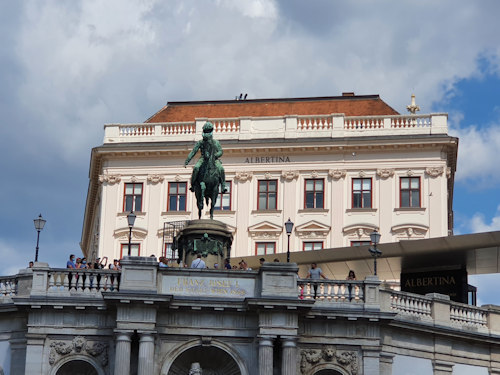
(The Albertina art museum seen from below)
The Albertina
The Albertina usually has impressive special exhibitions of historical, modern and/or contemporary art but also features two year-round highlights:
- The staterooms, offering glimpses into 19th-century aristocratic life
- The permanent exhibition (drawing largely on the Batliner collection)
The permanent exhibits cover French impressionism through to the modern day, typically featuring such names as Monet, Matisse, Munch, Miró, Magritte, and more.
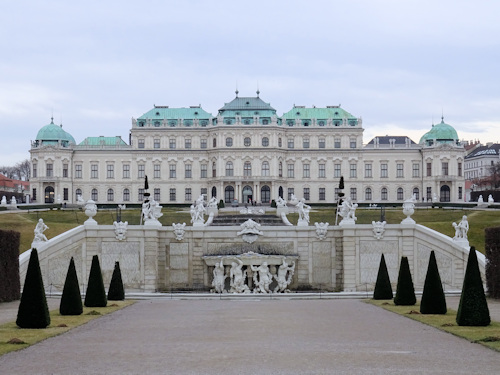
(Upper Belvedere palace and gallery viewed from the main gardens)
Upper Belvedere
Vienna’s most famous piece of art is Gustav Klimt’s The Kiss, which you find at Upper Belvedere Palace.
The galleries there include a strong collection of works from Vienna modernism with the likes of Klimt, Schiele, and Kokoschka on show.
Although easily reachable on public transport, Belvedere lies outside the city centre, whereas the Albertina and KHM are within a short walk of each other.
Optional extra or alternative
For modernist and contemporary inspiration, visit the MuseumsQuartier with its cluster of modern art museums and exhibition spaces. The Leopold Museum there, for example, also houses an extensive collection of works by Klimt and his colleagues.
History in a day
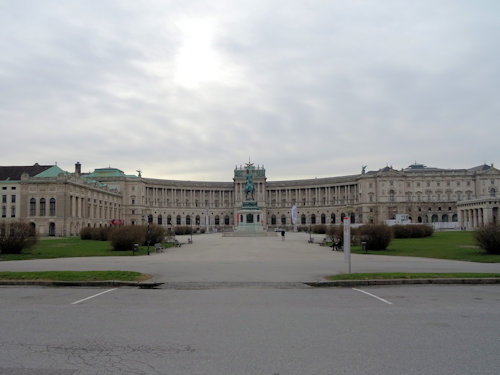
(The Neue Burg wing of the Hofburg)
You can’t escape the fact that Vienna’s all about the Habsburg dynasty for most people. If that includes you, then hit up one or both of these two locations:
The Hofburg
The Hofburg complex at the very heart of Vienna formed the centre of Habsburg life.
You have a wide choice of activities within but also the option to just wander around the squares and courtyards.
However, you might want to do the standard tour that takes in:
- The Sisi Museum, which takes you through the life and possessions of Empress Elisabeth
- The Imperial apartments, with a strong focus on Emperor Franz Joseph and his famous wife, Elisabeth
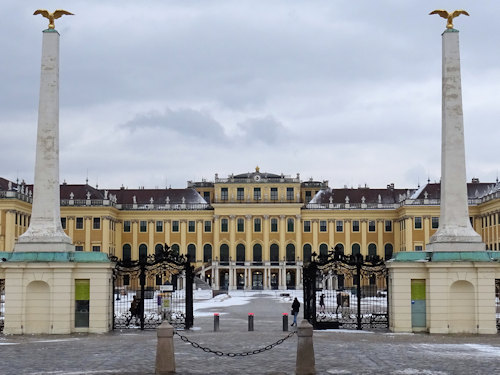
(The summer Habsburg palace)
Schönbrunn Palace
The summer palace of the Habsburgs sits in a lovely and large park. You could spend the entire day there, but your priority is again probably a tour of the interior.
The tours give you plenty of insights into Habsburg history and bring you to rooms where a young Marie Antoinette once roamed, Mozart performed as a toddler, Empress Elisabeth bathed, Emperor Franz Joseph worked, etc. etc.
Optional extra or alternative
For a look at Vienna’s modern history, the Neue Burg wing of the Hofburg complex has the House of Austrian History.
I’m somewhat partial to the Museum of Military History; although off the beaten track, it offers such fascinating exhibits as the car Franz Ferdinand was seated in when assassinated in Sarajevo (leading directly to WWI).
City life and architecture in a day

(The Mozart monument in the Burggarten park. On its left is the rear of the Neue Burg on Heldenplatz square)
Frankly, you could do a lot worse than just drift through the city centre for the day, dropping into the street cafés in spring/summer or coffee houses in autumn/winter.
The centre more or less equates to the area of the old fortified city and is full of gorgeous historical townhouses, churches, squares, museums and an imperial residence (the Hofburg mentioned above).
I have a dedicated list of walking tours that include self-guided and guided options.
You might, for example, try my detailed 4-part suggestion for a self-guided walking tour of central Vienna that takes something over 90 minutes (depending on your speed and stops). That has all sorts of tips, links, and background info on what you see.
Here’s an alternative shorter version…
Start off at Heldenplatz square, stroll through the Hofburg to Michaelerplatz square, then down Kohlmarkt and up the Graben past Peterskirche church to Stephansdom cathedral (both of which you can pop into).
Then wander down Kärntner Straße to the State Opera House.
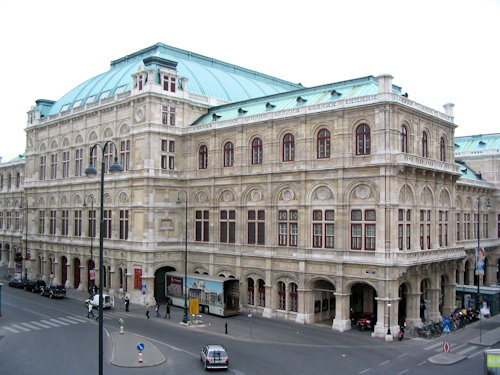
(The Wiener Staatsoper opera house)
From the opera, walk clockwise along the huge Ringstrassen boulevard all the way to Schottentor.
This journey takes you past, for example:
- The Burggarten park with its famous Mozart memorial
- The Kunsthistorisches and Naturhistorisches museums (gorgeous 19th-century buildings)
- The newly renovated Hellenic-style Parliament
- The Volksgarten park
- The neogothic Rathaus city hall
- The Burgtheater
- The University
From Schottentor, return to the Graben via Schottengasse, the Freyung and Am Hof.
As you meander your way through the centre of Vienna, be sure to pop down side streets for little architectural joys and historical nooks and crannies.
If you’re here at Easter or Christmas, then the above route takes you past two or more of the atmospheric seasonal markets that light up the city.
(A quicker alternative to all this is, of course, a sightseeing bus, though they won’t get you into the heart of the pedestrianised centre.)
Optional extra or alternative
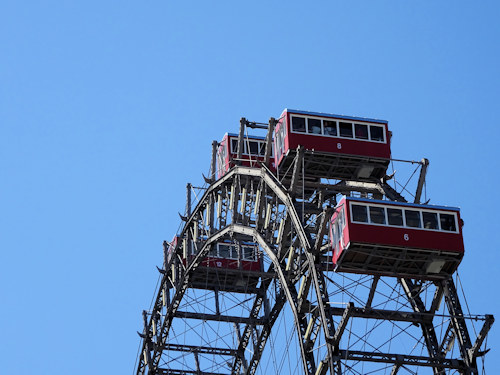
(The Riesenrad Ferris wheel)
Three special locations away from the centre you might (also) want to see are:
- The giant ferris wheel: iconic film location (think The Third Man) and a city trademark. This typically opens until late so you can do it as the last thing in your day. It also forms the gateway to a huge entertainment complex.
- The Hundertwasserhaus: the colourful architectural wonder created by Friedensreich Hundertwasser. On a lot of tourist lists, but it’s a little out of the way and not as spectacular as the pictures suggest, since time has dulled the colours somewhat.
(Expect coachloads of onlookers, so you might prefer to pop to the nearby Kunst Haus Wien: also a Hundertwasser design, but you can also go inside when open.)
- The Naschmarkt: a long open-air market full of little bars and restaurants, but mainly stall after stall of local and international produce
And the evening?
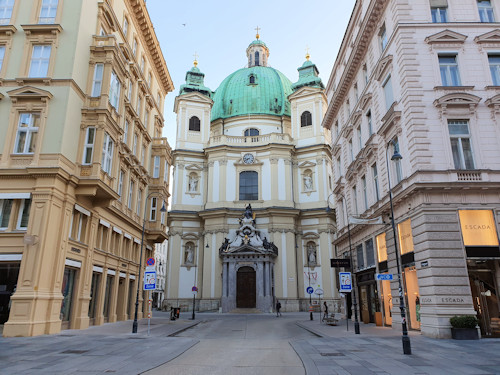
(I enjoyed an evening of classical music at the Peterskirche)
You may want to simply grab a meal (see below) at the end of your day. But Vienna specialises in short evening ensemble concert experiences featuring light classical music with a historical ambience, perhaps in a Baroque church or Neorenaissance palais.
You might even find yourself in a venue where Mozart or Johann Strauss once stood in front of the orchestra. Most locations are notably central and some offer ticket upgrades that include dinner.
Fit in some food
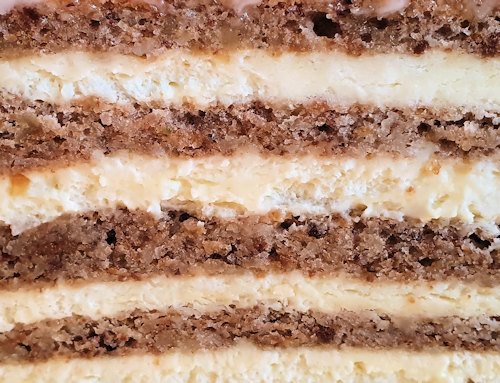
(Cake is always a strong option)
Whatever you want from your day, though, do try and fit in one of these typical Viennese experiences. In particular, consider the local food-related options for your meals or snacks:
- Go for coffee and cake in a traditional coffee house (we have plenty of such locations in the centre).
We’ll call this your priority and also suggest you choose the local Melange coffee option and a Sachertorte cake (if you only have time for one café).
- For your meal, assuming you eat meat, go for Wiener Schnitzel (pork fried in a breadcrumb coating) with Kaiserschmarren (shredded pancake) as dessert.
Traditional foods in Vienna tend not to be vegetarian, though you can obviously find vegetarian and vegan options in restaurants now.
- In summer, go for an ice cream at one of Vienna’s (largely Italian) ice cream parlours. In winter, pick up some roast chestnuts at the many Maroni stands that pop up throughout the city.
- Oh, let’s not forget grabbing a quick sausage at one of the many sausage stands. Think of it as the other end of the Viennese cultural spectrum from coffee and cake.
Further options
For more thoughts on what to do in Vienna in a day, take a look at the two overview articles that offer general advice on what to see and what to do.
And, if you just wish to follow in the footsteps of one of the city’s sons or daughters, try these guides. They mainly cover the famous composers, musicians, and artists closely associated with Vienna. Everyone from Beethoven to Brahms and Mozart to Mahler.
Have a great day!